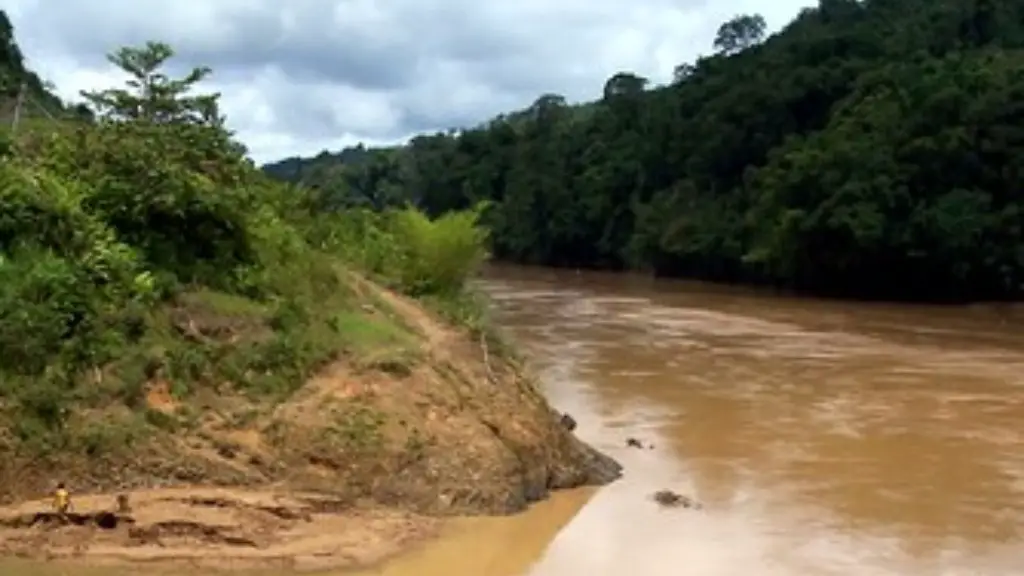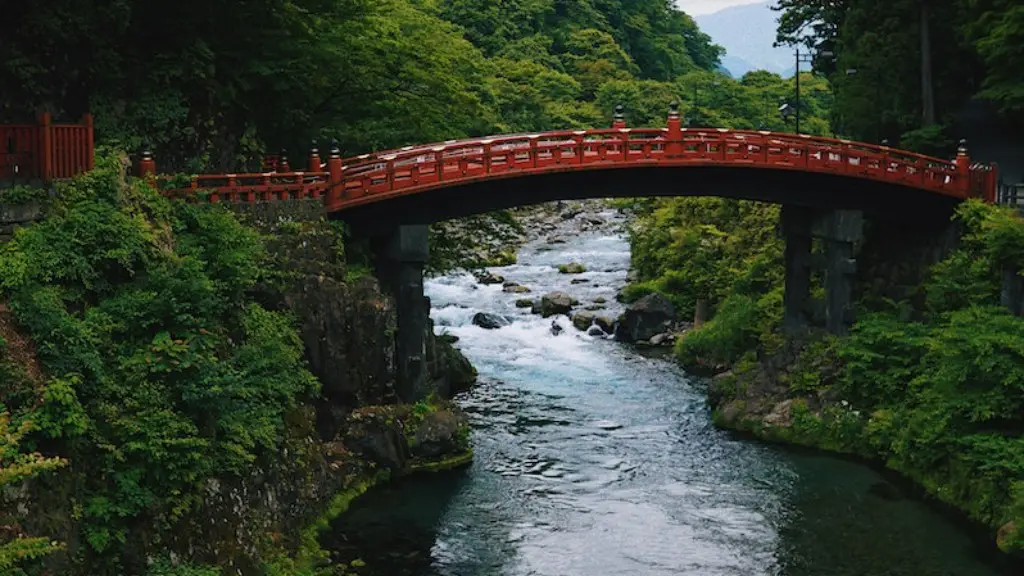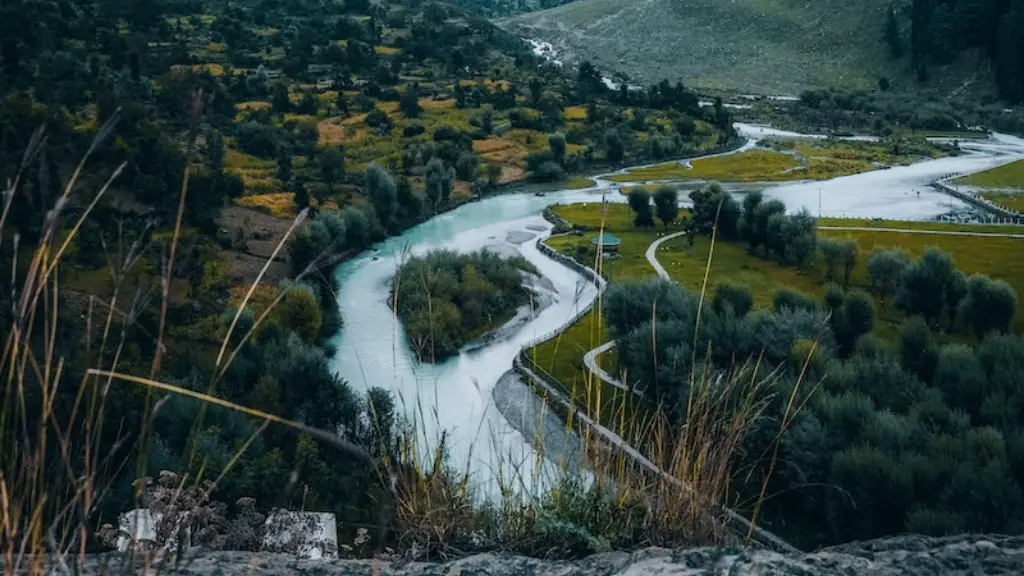The Mississippi River bluffs are dramatic river-cut cliffs on the eastern side of the Mississippi River. They are composed of sedimentary rocks, primarily limestone, sandstone and shale, laid down during the Paleozoic and Mesozoic geologic ages. The bluffs have developed over millions of years of interaction between river processes and the land. The bluffs are formed when the rivers erode the valleys, creating new riverside landscapes.
The formation of the Mississippi River bluffs starts with the uplift of the continental crust. The collision of North American and African continents pushed up the North American crust, which created the Appalachian mountains. During the Pleistocene epoch, the Mississippi River began to form, which included the channels that still form the bank of the river today. The river waters eroded and cut through softer bedrock, creating the characteristic river bluffs.
As the Mississippi River with its powerful currents slammed against the rising hills and mountains, it slowly wore away the mountainsides, carving its way through them, ceaselessly digging deeper and deeper into the landscape. Over time, the river dug out the gentle curvatures of V-shaped valleys and left behind the dramatic cliffs at their edges. These cliffs are one of the most evident features of the upper Mississippi River.
A contributing factor in the formation of the Mississippi River bluffs is the changing course of the river over the years. Over the course of geologic time, the Mississippi River has sliced through a variety of rocks and soils to create the picturesque bluffs. Variations in the rocks’ resistance to erosion and the flexibility of the river’s flow allow for the rivers to form specific formations over time.
Recent climatological changes are also a factor in the formation and features of the Mississippi River bluffs. In the last Ice Age, much of the United States was covered in a thick sheet of ice. As the temperature warmed and the ice eventually melted, the land below was flooded with water. This surge of water further shaped and formed the banks of the Mississippi River, creating the bluffs and changing the course.
Animal Life
The Mississippi River bluffs provide an important habitat for numerous species of animals and plants. Some of the species that can be found in the bluffs include freshwater mussels, fish, amphibians, reptiles, mammals, and the federally threatened bald eagle. The animals rely on the bluffs for not only food and shelter, but also for protection from predators.
The diverse plant life found in and around the Mississippi River bluffs helps to provide a habitat that supports a wide range of animal species. The plants act as a food source for many animals, and their presence sheds more light on the extremely important role that the bluffs play in the local ecosystem.
The rugged beauty and wildlife of the Mississippi River bluffs is dependent on their seasonal floods, storms, tributaries, and sediment deposits, which help to keep the bluffs dynamic, constantly changing and supporting new species.
Recreational Activities
The Mississippi River bluffs provide numerous recreational activities for locals and visitors. Camping, boating, fishing, bird-watching and hiking are some of the most common activities, as they offer stunning views of the river and surrounding landscape.
Sam Dale Trail, located along the banks of the Mississippi River between La Crosse and Eastman, Wisconsin, is a popular spot for those looking to take in the stunning bluffland scenery. The 3.2-mile interpretive nature trail is open to the public year-round for hiking, biking, and even cross-country skiing.
The Mississippi River also supports a thriving recreational fishing industry. Sport fishermen from all over the country come to the Mississippi to pursue largemouth and smallmouth bass, walleye, catfish, and other fish, and then enjoy the iconic views of the river bluffs from the riverside.
Local Economy
The Mississippi River bluffs are not only important for the local ecology and recreational opportunities, but also for the economy. The communities that border the river depend on the river for tourism, recreation, and commerce. The river provides employment opportunities, as well as business and investment opportunities, such as fishing and recreation.
The recreational activities supported by the Mississippi River bluffs. generate millions of dollars of income for local businesses. These businesses rely on visitors who enjoy savoring the breathtaking views of the river, bird-watching, fishing, and picnicking while traveling along the winding river.
The Mississippi River bluffs have also been important for transportation. Since the early 19th century, the Mississippi River provided an important transportation route for goods and services, as well as for movement of people from one place to another. This allowed communities to develop and expand, helping bring growth to the areas impacted by the Mississippi River.
Conservation Efforts
The local communities, governments and organizations are working together to protect, preserve and manage the Mississippi River bluffs. A variety of organizations are involved in the conservation of the bluffs, from local activists and citizens to national groups such as The Nature Conservancy, Mississippi Valley Conservancy and Wildlife Forever.
Organizations are also working to educate people on the importance of the bluffs and their unique ecosystems. Through a variety of educational programs, these organizations are helping people understand the implications of their activities and the impact they can have on the environment.
The conservation efforts for the Mississippi River bluffs focus on preserving the natural beauty of the area, as well as its important ecological role. These efforts are making it possible for the bluffs to remain in their natural state, so that visitors and locals can continue to enjoy their serenity.
Cultural Significance
The Mississippi River bluffs have long been revered by Native Americans, who have been living in the region for centuries. The bluffs served as a natural boundary between the different tribes, and their presence has been documented in local folklore and stories passed down through generations.
The bluffs also played a significant role in the development of the American Northwest, as they served as a gateway to the vast West. The river’s waterways have provided transportation and commerce, helping to foster the development of trade and culture in the early days of the United States.
Today, the Mississippi River bluffs hold special meaning for locals and visitors alike. The bluffs are a testament to the power of nature and the exquisite beauty of the natural world.
Historical Significance
The Mississippi River bluffs hold an important historical significance, both from a spiritual and a physical standpoint. The bluffs were a vital location for Native Americans, who used the area for fishing, trade, and for spiritual ceremonies. The bluffs are also surrounded by ancient burial grounds and petroglyphs, attesting to their spiritual significance.
More recently, the Mississippi River bluffs played a crucial role in American history, particularly the Civil War. Many of the battles fought during this time took place in and around the bluffs, and they have become a symbol of the courage and sacrifice of American service members.
The Mississippi River bluffs are a reminder of the past and of some of the most important figures and events that shaped the history of the United States. They are a symbol of the beauty of the natural world and of the human spirit.
Tourism
The Mississippi River bluffs are one of the most popular tourist destinations in the United States, drawing thousands of visitors every year. From canoe trips and fishing trips to nature hikes and bird-watching, there is something for everyone who visits the region.
The bluffs provide a unique experience, as visitors get to take in the stunning views of the landscape while learning about the history, culture, and wildlife of the area. Tourists can also enjoy the many recreational activities that the area has to offer, from whitewater rafting to kayaking and more.
The region’s true beauty lies in its untouched, natural environment. Visitors are able to take in the beauty and tranquility of the Mississippi River bluffs, as well as the unique wildlife that calls the area their home.
The Mississippi River bluffs are an integral part of the nation’s history and one of its most spectacular landscapes. Enduring both geologic and climactic changes, the bluffs have been shaped by the natural environment and by the people who inhabit the area. From providing a habitat for wildlife to supporting businesses and recreational activities, the Mississippi River bluffs continue to be an important part of the local ecosystem and economy.





